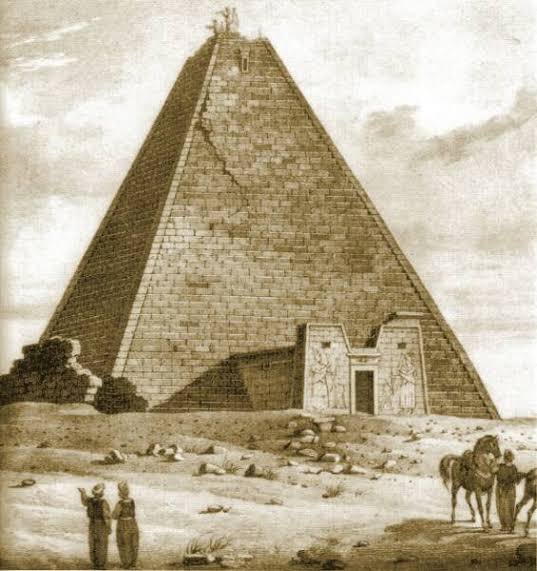Amanitore (circa 50 CE) was a Nubian Kandake, or regnant queen, of the ancient Kushitic Kingdom of Meroë, which was also known as Nubia in ancient writings. Candace and Kentake are two alternate spellings. Amanitore’s throne name is Merkare in Egyptian hieroglyphics. Many Kandakes are depicted as warrior-queens who commanded armies in battle.
Although it is unclear whether Kandake Amanitore was Natakamani’s wife or mother, she is frequently mentioned as co-regent with him.
Her royal palace was in Gebel Barkal, which is now a UNESCO World Heritage Site in modern-day Sudan. Between the Nile and the Atbara rivers was the territory she ruled.
Her reign began in 1 BCE and she belonged to the Meroitic historical period. By 50 CE, Amanitaraqide, her successor, had completed his reign.

A ruler named Amanitore appears in several texts. The temples in Napata, the Nubian capital in modern-day Sudan, Meroë near Shendi, Sudan, and the Naqa Lion Temple are among them.
Natakamani is frequently depicted with Amanitore; however, Amanitore could be his mother rather than his wife. In the Kush hierarchy, a Kandake held a powerful position. The mothers would rule and create rulers out of their sons, but they would also depose them. A Kandake could even order the king to commit suicide to end his reign, which he had to obey.
In Meroë, Amanitore has her own pyramid where she is buried. The tomb is about six meters square at its base and is not a pyramid in the traditional sense.
Although some sources debate, she is said to be mentioned in the Bible in Acts 8:26–40 in the story about the Ethiopian’s conversion:
And the angel of the Lord spoke to Philip, saying, Get up, and go toward the south unto the way that goes down from Jerusalem to Gaza, which is desert. And he got up and went: and, behold, a man of Ethiopia, a eunuch of great authority under Candace queen of the Ethiopians, who had the charge of all her treasure, and had come to Jerusalem to worship, was returning, and sitting in his chariot read Isaiah the prophet….
Amanitore was among the last great Kush builders. She was involved in restoring the large temple for Amun at Meroë and the Amun temple at Napata after it was demolished by the Romans. Reservoirs for the retention of water also were constructed at Meroë during her reign. The two rulers also built Amun temples at Naqa and Amara.
The amount of construction that took place in the middle of the first century suggests that this was Meroitic history’s most prosperous period. More than 200 Nubian pyramids have been built, the majority of which have been plundered.

Her country was directly south of ancient Egypt, and surviving texts show that they spoke the same language. Other aspects of the culture differ significantly but are less well known, and others, including religious influences, appear to have influenced Ancient Egyptian culture. It was a prosperous country with abundant gold reserves, and it traded in jewelry, exotic animals, and textiles.
 The African History Truly African
The African History Truly African

